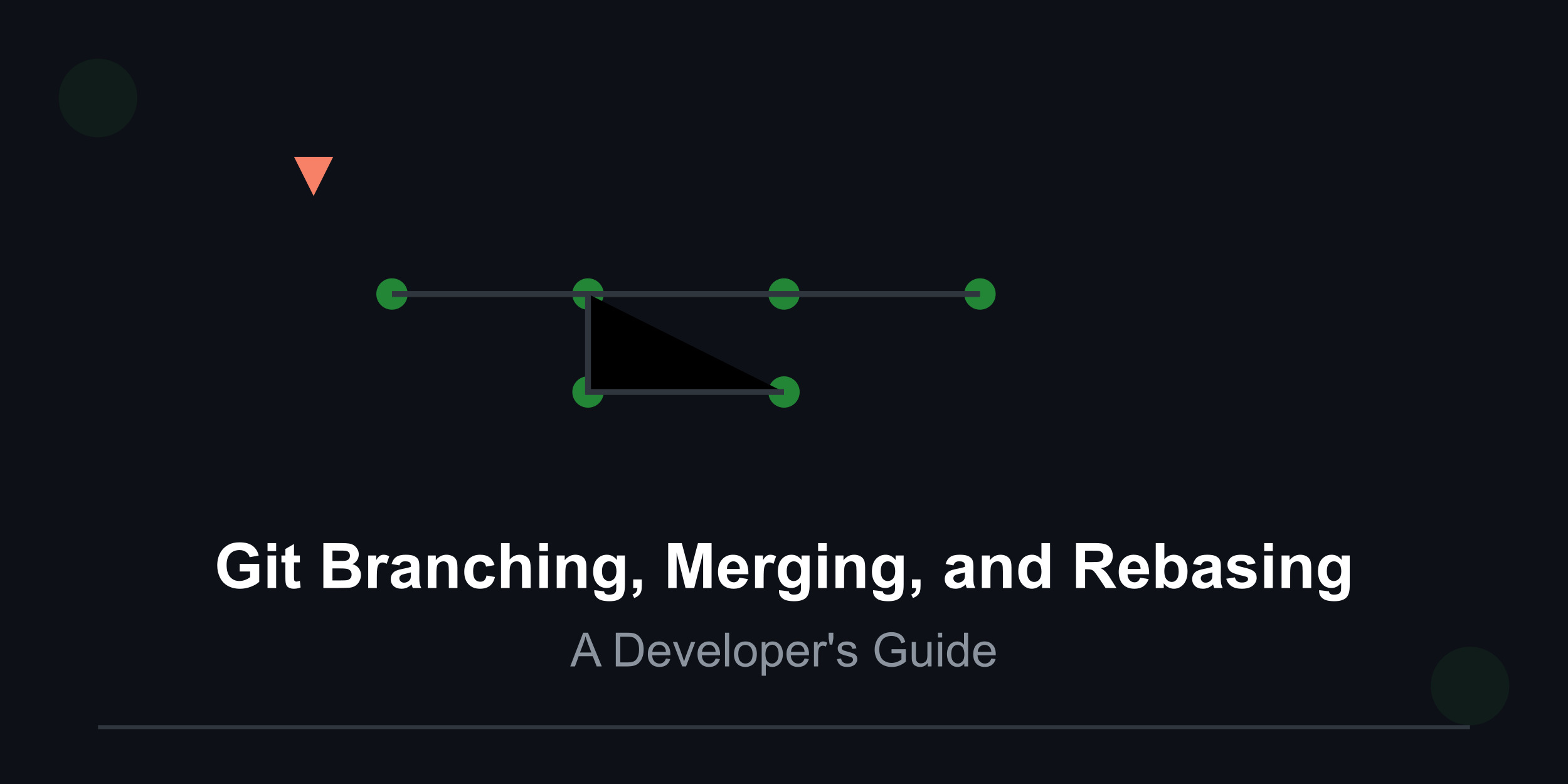Git Branching, Merging, and Rebasing: A Developer's Guide
 Kanav Gathe
Kanav Gathe
Reading time: 5 minutes
As a DevOps engineer or developer, mastering Git is crucial for effective collaboration and code management. Today, we'll dive into some of Git's most powerful features: branching, merging, and rebasing. Whether you're working solo or in a team, understanding these concepts will help you maintain a clean and efficient workflow.
The Power of Git Branches
Think of Git branches as parallel universes for your code. Each branch represents an independent line of development, allowing you to work on different features or fixes without affecting the main codebase. The default branch, usually called 'master' or 'main', serves as the stable version of your project.
Why Use Branches?
Isolate new features during development
Fix bugs without disrupting the main codebase
Experiment with new ideas safely
Enable multiple team members to work simultaneously
For example, when starting a new feature, you might create a branch like this:
git checkout -b new-feature
Git Reset vs. Revert: Choosing Your Time Machine
Every developer occasionally needs to undo changes. Git provides two primary tools for this: reset and revert. While they might seem similar, they serve different purposes.
Git Reset
Think of reset as a time machine that actually erases the future. It moves your branch pointer backward, effectively removing commits. This is great for local changes but can be dangerous with shared repositories.
git reset --hard HEAD~1 # Removes the last commit completely
Git Revert
Revert is more like creating an "anti-commit" – it adds a new commit that undoes previous changes. This is safer for shared repositories because it preserves history.
git revert HEAD # Creates a new commit that undoes the last commit
The Great Debate: Merge vs. Rebase
One of the most discussed topics in Git workflows is whether to merge or rebase. Both achieve similar goals but in very different ways.
Merging: The Safe Choice
Merging is like bringing two parallel timelines together. It creates a new commit that combines changes from both branches, preserving the complete history.
git checkout master
git merge feature-branch
Pros:
Preserves complete history
Never rewrites commits
Safer for shared branches
Cons:
Can create complex history
More merge commits
Rebasing: The Clean Alternative
Rebasing is like picking up your changes and replanting them on top of the latest version. It creates a linear, clean history but requires more careful handling.
git checkout feature-branch
git rebase master
Pros:
Creates linear history
Cleaner project timeline
Easier to understand changes
Cons:
Rewrites commit history
Requires care with shared branches
Can be complex to resolve conflicts
Best Practices for Daily Git Usage
Create Meaningful Branches
Use descriptive names (e.g.,
feature/user-authentication)Keep branches focused on single features or fixes
Commit Early and Often
Make atomic commits that represent single logical changes
Write clear commit messages
Stay in Sync
Regularly pull changes from the main branch
Resolve conflicts promptly
Choose the Right Tool
Use merge for feature branches
Consider rebase for local cleanup
Always use revert for shared branches
Real-World Example
Let's say you're working on a new feature for an e-commerce site:
# Create feature branch
git checkout -b feature/shopping-cart
# Make changes and commit
git add .
git commit -m "Add shopping cart functionality"
# Stay up to date with master
git checkout master
git pull
git checkout feature/shopping-cart
git rebase master
# After testing, merge to master
git checkout master
git merge feature/shopping-cart
Conclusion
Understanding Git's branching, merging, and rebasing features is essential for modern development workflows. While merging offers safety and preservation of history, rebasing provides a cleaner, more linear history. Choose your tools based on your specific needs and team workflow.
Remember: Git is powerful but forgiving. Don't be afraid to experiment in a local repository to better understand these concepts. The more you practice, the more natural these operations will become.
Quick Tips for Success:
Never rebase shared branches
Keep feature branches short-lived
Write descriptive commit messages
When in doubt, use merge
Practice in a test repository first
By mastering these Git concepts, you'll be better equipped to handle complex development scenarios and collaborate effectively with your team.
Subscribe to my newsletter
Read articles from Kanav Gathe directly inside your inbox. Subscribe to the newsletter, and don't miss out.
Written by
